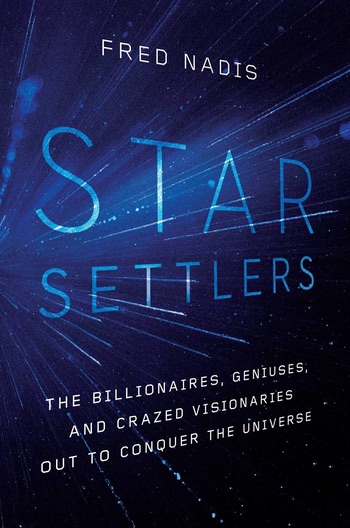Review: Star Settlersby Jeff Foust
|
| Nadis looks back to the views of the “cosmists” of pre-Soviet Russia, whose “twinned obsessions with immortality and spaceflight are common among Silicon Valley billionaires.” |
Much of the book covers familiar territory, with early chapters on people like Tsiolkovsky, Goddard, and von Braun. The book then broadens out to look at the some of the post-Apollo visions for humanity’s future in space, from Gerard K. O’Neill and space colonies to Biosphere 2 and more recent plans for human missions to the Moon and Mars. The discussion ranges from space tourism to sex in space, a topic he discussed here (see “Star children: can humans be fruitful and multiply off-planet?”, The Space Review, September 14, 2020).
The book is livened up with fish-out-of-water anecdotes like attending a Mars Society conference or a Yuri’s Night event at the Los Angeles museum that’s home to the shuttle Endeavour. (At the latter, he leaves the hall where Endeavour is “when New Age music came on and people were asked to hold hands and try an experiment,” looking instead for free burritos. Probably a good choice.) Through it all, he is looking for an underlying motivation: why do people want to go live on Mars, or even spend a night raving under a space shuttle?
A thread Nadis weaves loosely through the book dates back to the views of the “cosmists” of pre-Soviet Russia, whose “twinned obsessions with immortality and spaceflight are common among Silicon Valley billionaires.” Spaceflight proponents have also been motivated by a fear of stagnation, he adds, requiring the expansion that fed into the frontier metaphors long used for space exploration.
But, he suggests, those explanations are insufficient. “While there are a number of rationales for spacefaring, there is no firm rationality underlying the project. Like Wile E. Coyote walking off the edge of the cliff to lightly tread air, committed space enthusiasts work without a net,” he concludes. Spaceflight alone is not the cure for whatever ails humanity.
| “We, as a species, have to make our own choices, accept their full weight,” Nadis says at the end of the book, “and not simply the assurance that salvation is to be found in the stars.” |
Star Settlers could have used a little stringer editing. When discussing a NASA study that appeared to rule out the prospects of terraforming Mars, he refers to “Bruce Jakofsky, of Colorado State University” rather than Bruce Jakosky of the University of Colorado. He describes how Virgin Galactic founder Richard Branson rappelled down the side of Spaceport America’s main terminal building “after the 2019 move from Mojave”; that actually took place when that building was dedicated in 2011 (a sign of Virgin Galactic’s slow progress.)
Nonetheless, the book offers a thoughtful examination of that interest in human spaceflight and expansion into the universe by billionaires, geniuses, and crazed visionaries alike (even when they are the same person.) The prospects for such expansion are perhaps brighter than ever thanks to the progress made by companies like Musk’s SpaceX, but that doesn’t mean they are a panacea to the world’s problems. “We, as a species, have to make our own choices, accept their full weight,” Nadis says at the end of the book, “and not simply the assurance that salvation is to be found in the stars.”
Note: we are using a new commenting system, which may require you to create a new account.
